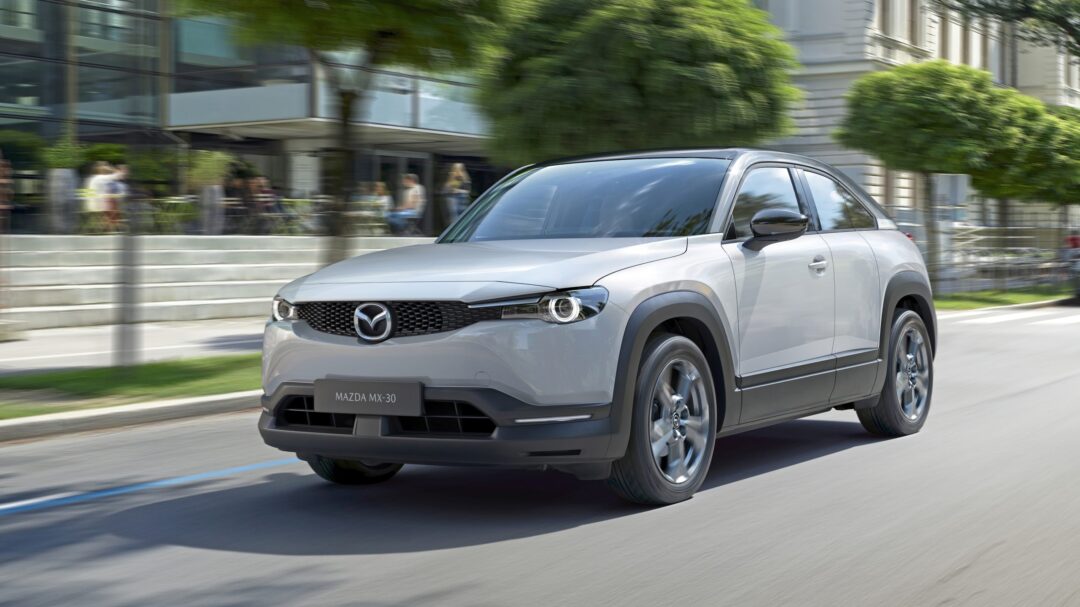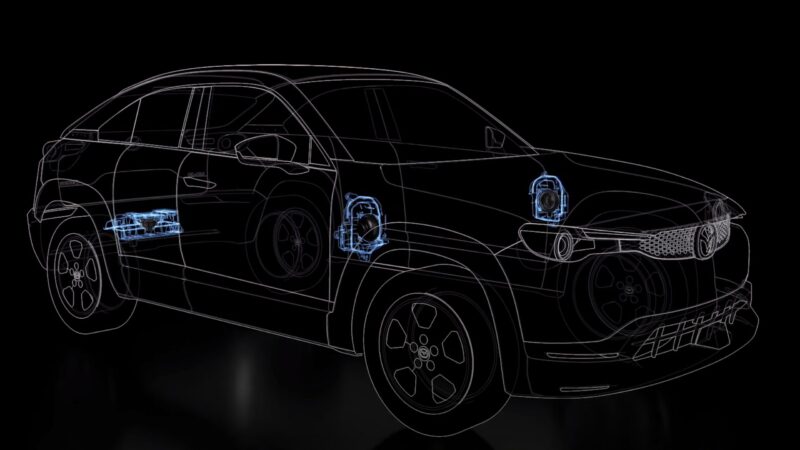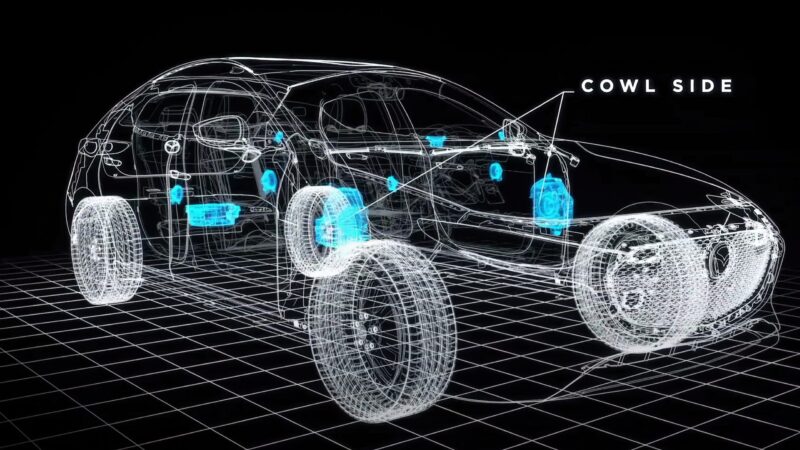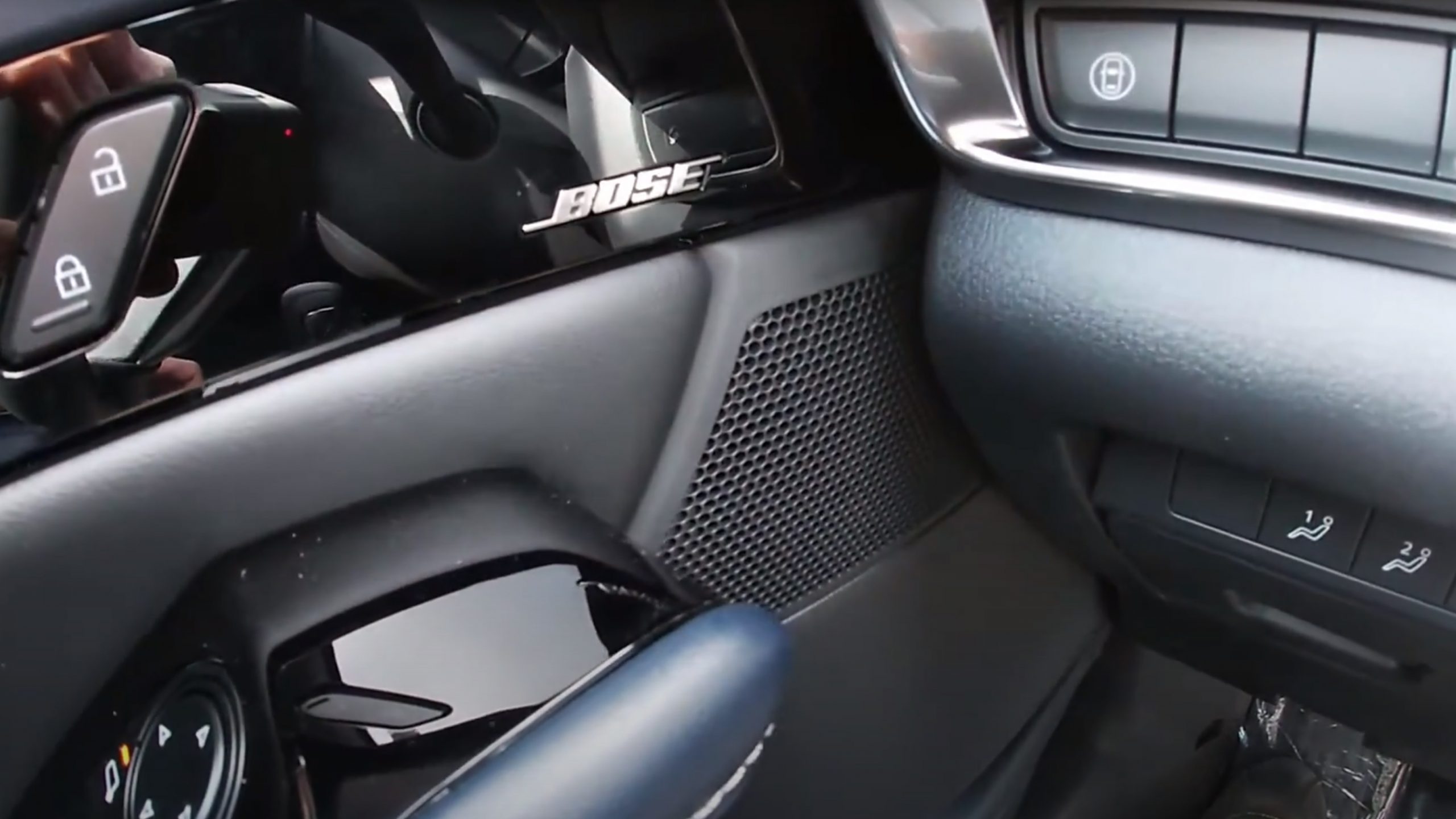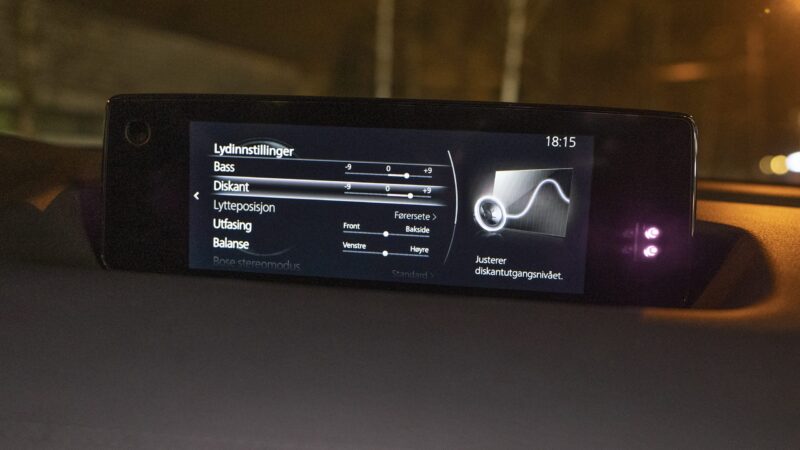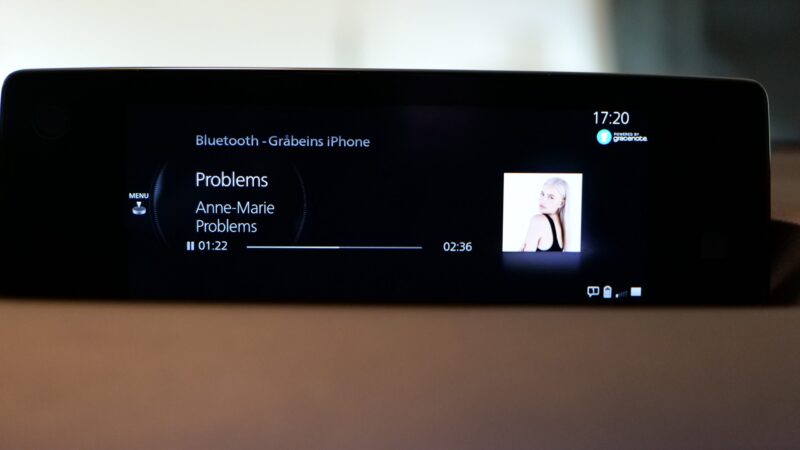While it may seem as if most electric car manufacturers are fighting for the title as the most futuristic, Mazda is going the opposite way with its first electric car, MX-30. With toned down center console and familiar instrument panels, and where all the buttons and levers are where you expect to find them.
Not that the Mazda MX-30 lacks anything on the equipment side. Here you get a windscreen display, (HUD), two full 7-inch screens (where only the one showing the cabin temperature and air conditioning has a touch panel) and a rear view camera as standard. You also get a virtual instrument panel, showing what you need in terms of battery capacity, driving economy – and the location of the charging port (at the back on the right side).
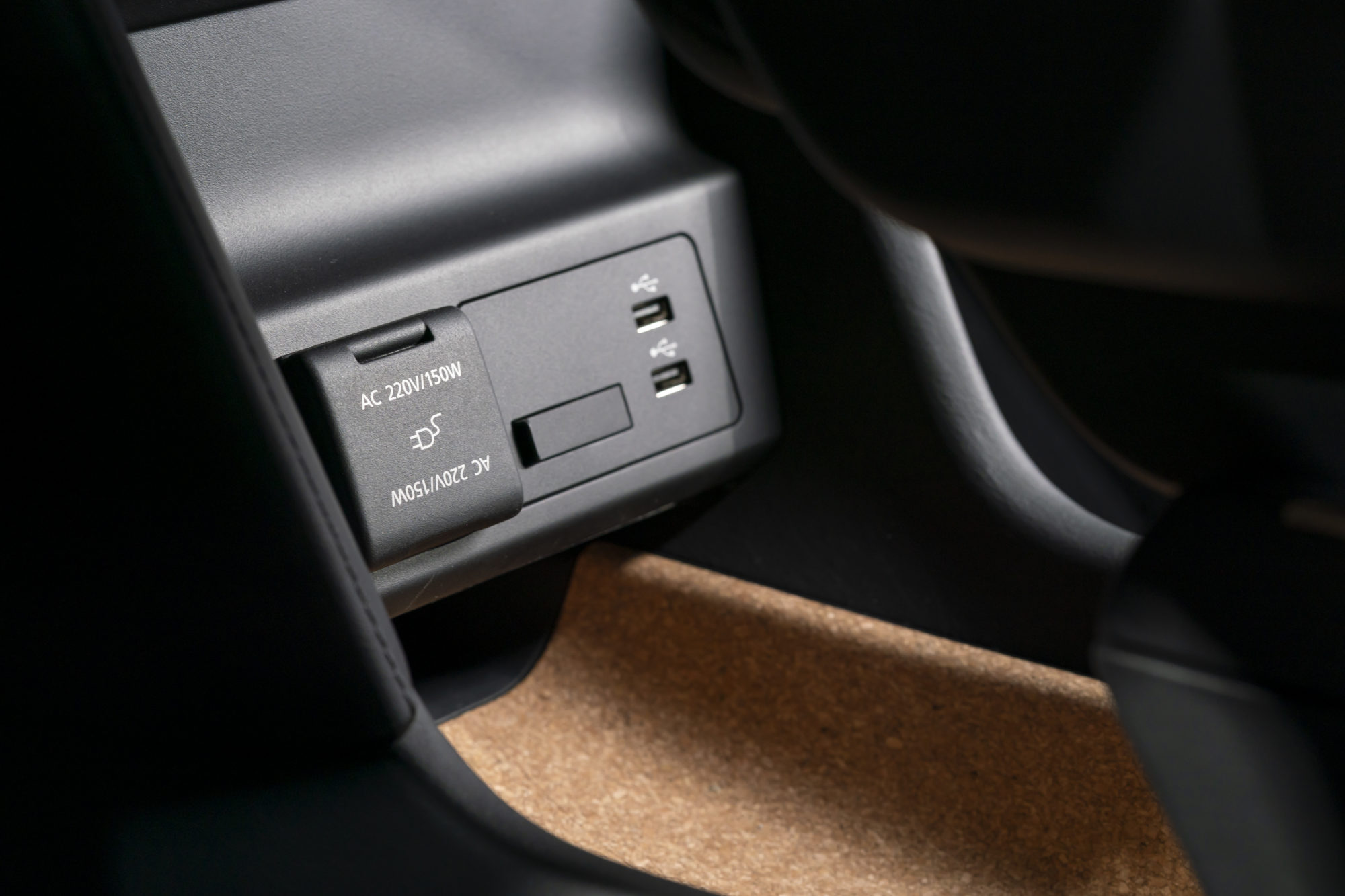
Well-equipped standard
Also standard are heated and dimmable side mirrors, LED headlights, front and rear parking sensors and 18-inch alloy wheels. 220 volt power outlet in the center console is also included, especially user-friendly for side passengers with a laptop. The characteristic “suicide doors” at the back are also a breath of fresh air, although they still do not make it any easier to step into the back seats. Simply because the seats are so cramped.
The price is a very nice 25,545 GBP, for the lowest equipment package called Sky. For a little more extra, you get equipment level Cosmo, which adds adaptive cruise control and a 360-degree parking camera, as well as an auto brake when reversing with pedestrian detection. In addition to a few other small snacks such as white imitation leather and gray-mixed textile. But for me, the premium sound system is the most interesting, signed Bose.
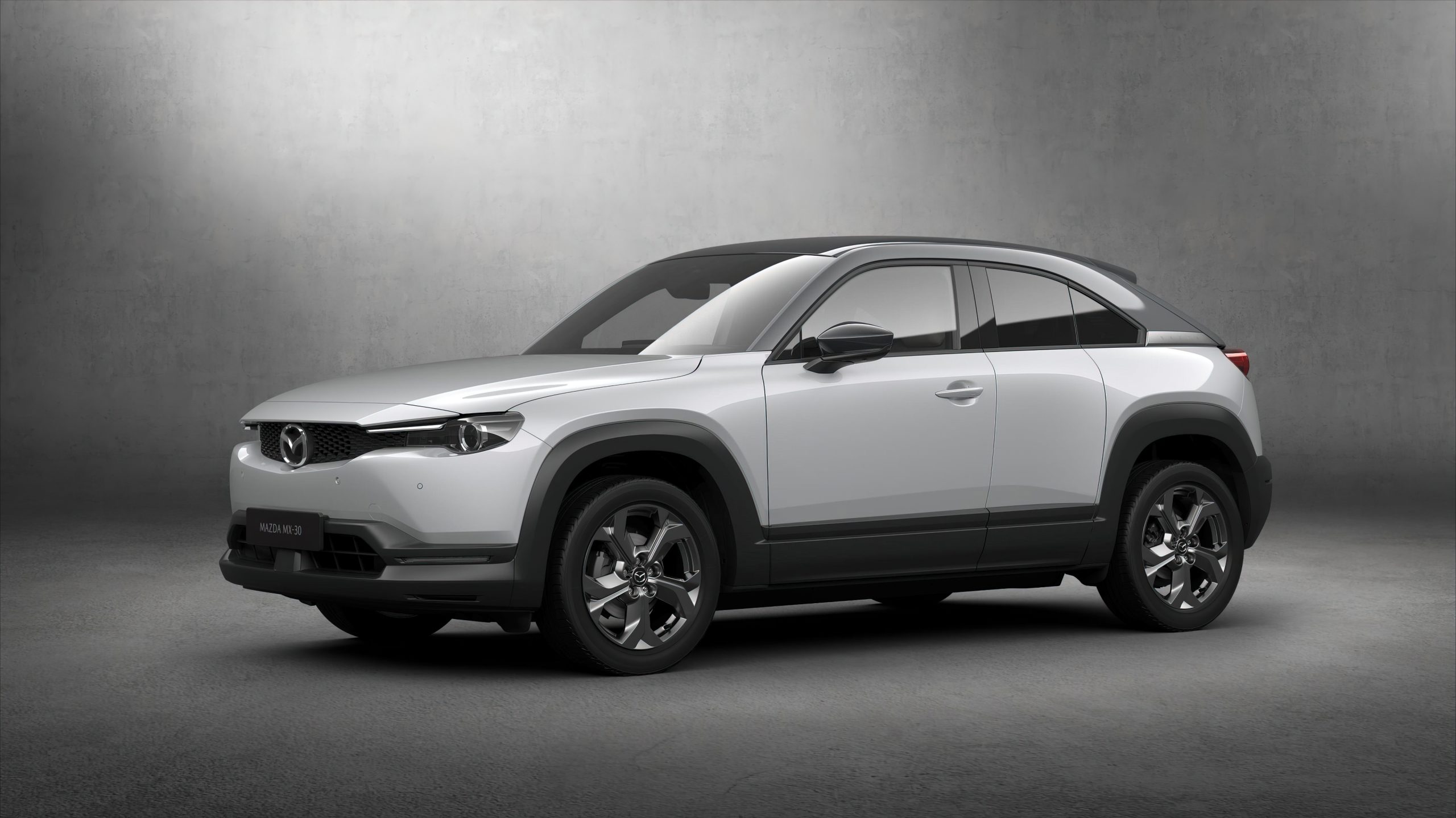
12 speakers from Bose
The Mazda MX-30 is a small car with limited space. So Bose had to be creative to make room for the necessary cone area to move sufficient amounts of air. First, they wanted to get the woofers into corners instead of in the middle of the front doors. It provides better timing and phase response in the bass, but it is not optimal for the reproduction of vocals and the instruments’ midrange register.
In the front compartment, therefore, Bose has chosen to distribute the tone register between three drivers for each of the right and left channels: the midrange elements in the middle of the doors, the tweeters at the bottom of the A-pillars, inside the side mirror. And the woofers in the sides further forward, at leg height. At the top of the dashboard is the center speaker, while the rear compartment has a mid-range tweeter in each side door.
To ensure deep and powerful bass, a subwoofer has also been placed in the luggage compartment. Which then has reduced the size from the already limited 366 liters to the embarrassing 341 liters. No “frunk” here either. It is slightly more than the Hyundai Kona’s 332 liters, but far from any family car. But then you also get a nice bass response in exchange. More on that later.
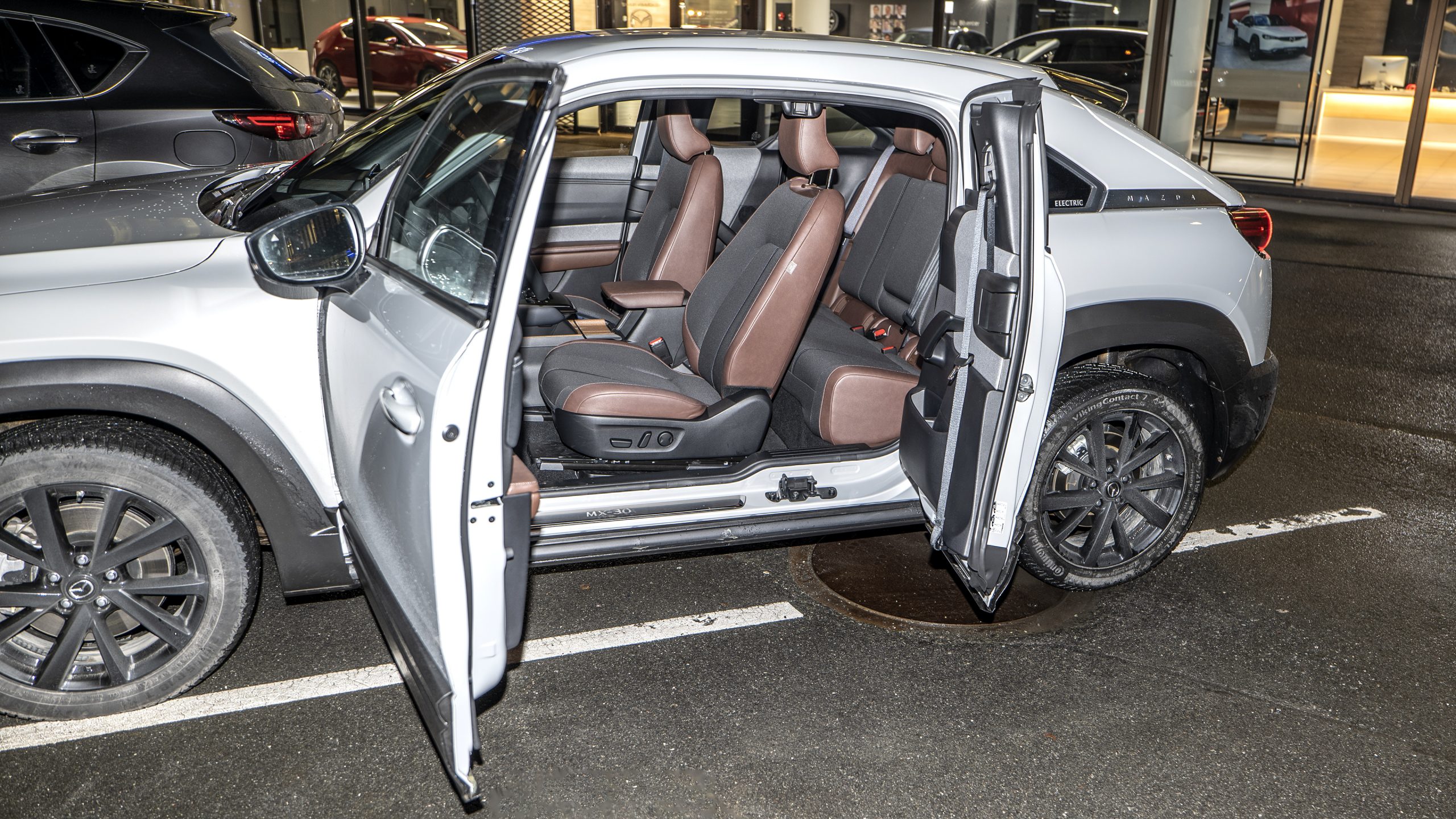
Self-adjusting sound level
Because the noise in the passenger compartment changes with speed and surface, Bose uses a technology they call AudioPilot. This monitors background noise, and adjusts the sound level of the music up and down in relation to the noise level. This eliminates the need to manually adjust the sound level when accelerating up and down, or entering a tunnel.
Bose has also worked to be able to give each passenger a good stereo image, but if you want the best for everyone, leave the focus of the sound image centered in the passenger compartment.
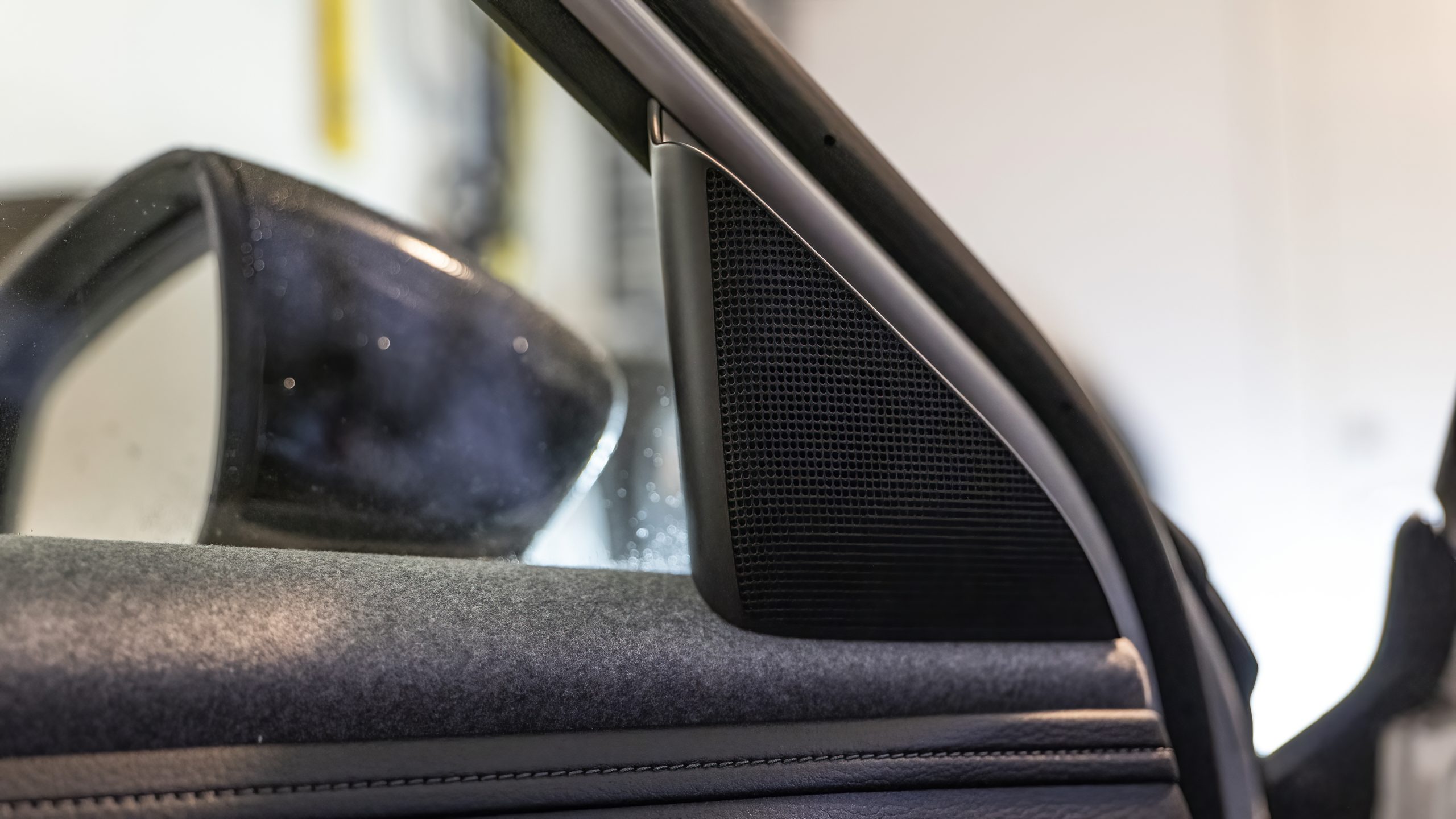
Well-damped
The Mazda MX-30 basically has a well-damped cabin, and is well shielded from wheel noise. It is a good starting point for good music experiences in a busy everyday life.
Unfortunately, in its eagerness to retain the feel of fossil cars, Mazda has equipped the MX-30 with a fake engine sound inside the passenger compartment. And it can not be turned off! Still, with the music on medium high blast, I do not think much about it. I still wonder why, though…
The Mazda MX-30 has great sound
Most is forgiven when the favorite playlist comes on. Yes, I had to adjust both treble and bass a bit, otherwise Bose would be a bit too midrange-focused for me. But then it will also be good. Very good. The low-pitched voice of Billie Eilish comes out clearly in the cabin, while there is good control of the bass rhythms. The bass is fast and cash, and without being boomy. The tones in the bass are clean, and there is nothing in the cabin that rattles or buzzes. In contrast to, for example, the Lexus UX300e, which has an even better sound system from Mark Levinson, but with poorer performance damping of the cabin and especially the doors that creak in the bass when playing loud. Mazda is more accomplished.
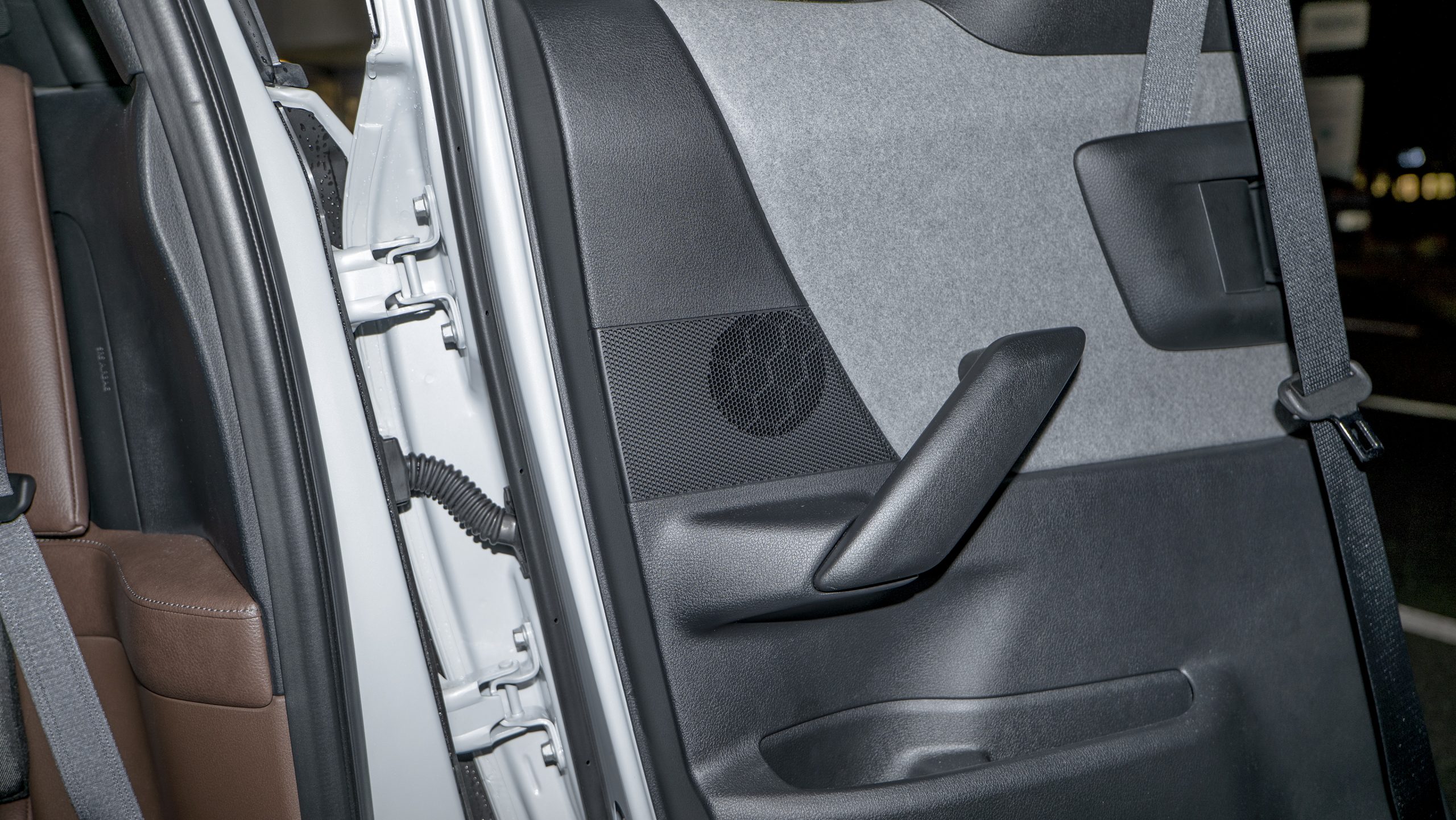
There is great dynamics even in more difficult pieces. Classical music sounds good, and the brutal Krotona Days by Rodrigo y Gabriela, where they hammer away on their respective flamenco guitars, has a great bite and good punch.
The sound system does not have quite the same sound pressure and fun factor as the Harman Kardon system in the Mini Cooper SE, but the Bose system in the Mazda MX-30 does the job and well so. Have you just bought your Volkswagen ID.3, you said? If you are interested in sound, you can be allowed to start laughing now, because the Mazda system will not be a contender at all.
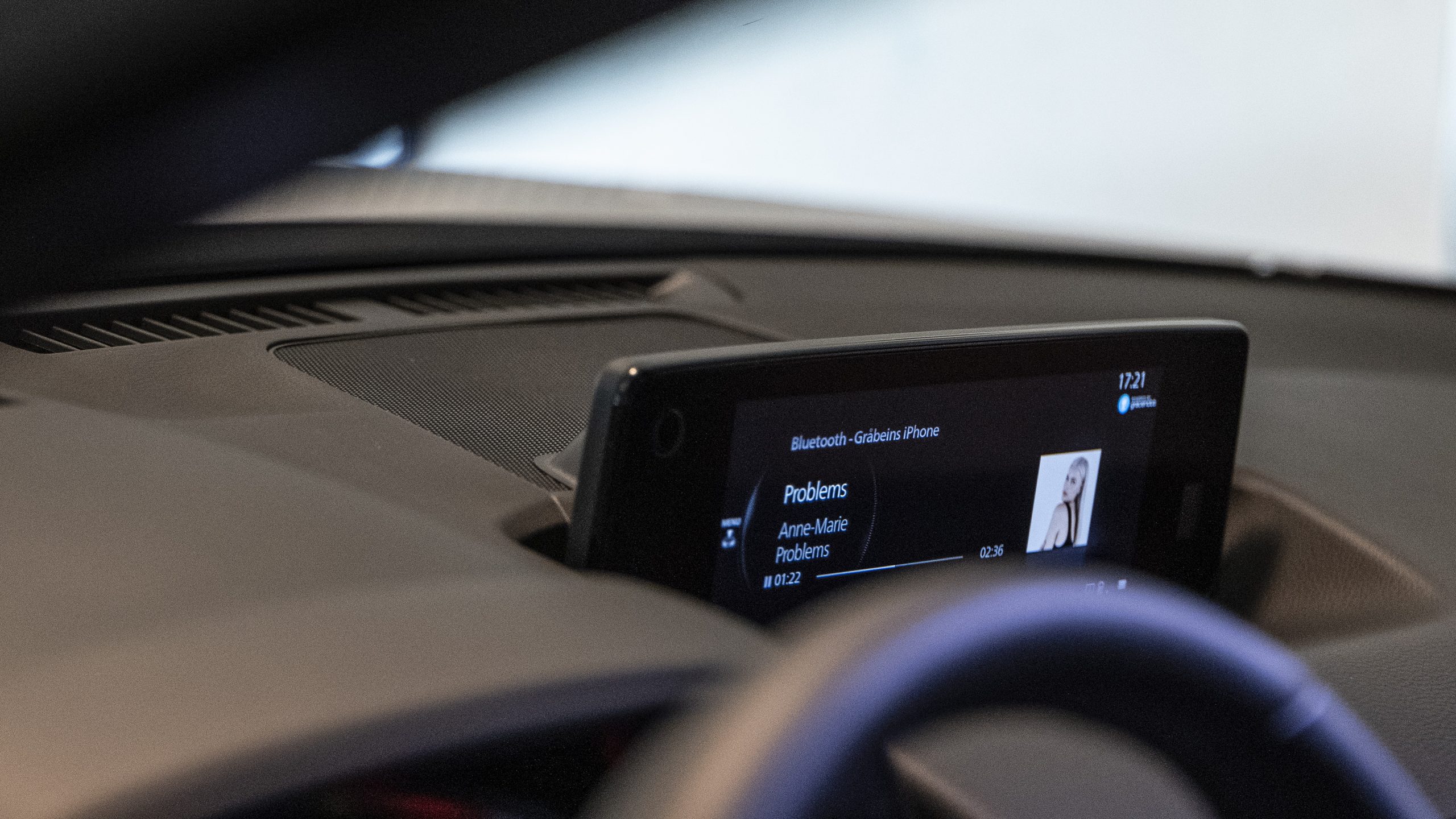
Not very exciting
Leaving aside the sound system, the Mazda is a more solid affair. Yes, it is well-behaved on the road, the steering is responsive and nice, and the car is intuitive to use for people who are not used to electric cars.
Unfortunately, the same applies to acceleration. This is nothing reminiscent of an electric car either. 0-100 km/h in 9.7 seconds is rather pedestrian, nor does it tell the whole story. My own 2013 model Nissan Leaf does the same feat in 11 seconds, but it is still perceived as more agile than the Mazda. It responds more immediate when you push the pedal. Mazda, for its part, has added a torque delay, something I did not like with Honda e either. The Honda, on the other hand, is faster, and more interesting inside, including cameras for side mirrors.
The “gear lever” of the Mazda MX-30 is like an old-fashioned auto-gear lever: To change from Park to Drive, the lever must be tilted to the right, then down. To put it in the Park again, the lever must be pushed up to R, and then to the left. A little more cumbersome than other electric cars, but something that fossil car drivers will be used to.
Blind spots
The Mazda MX-30 has blind spot warnings, and it is needed. The driver’s view is blocked by the frame between the driver’s door and the reversing rear door. That is, where the B-pillar would sit, if there was one. This means that you have to lean forward quite strongly to see if there is traffic coming from the left, if you are going to lay out at an intersection.
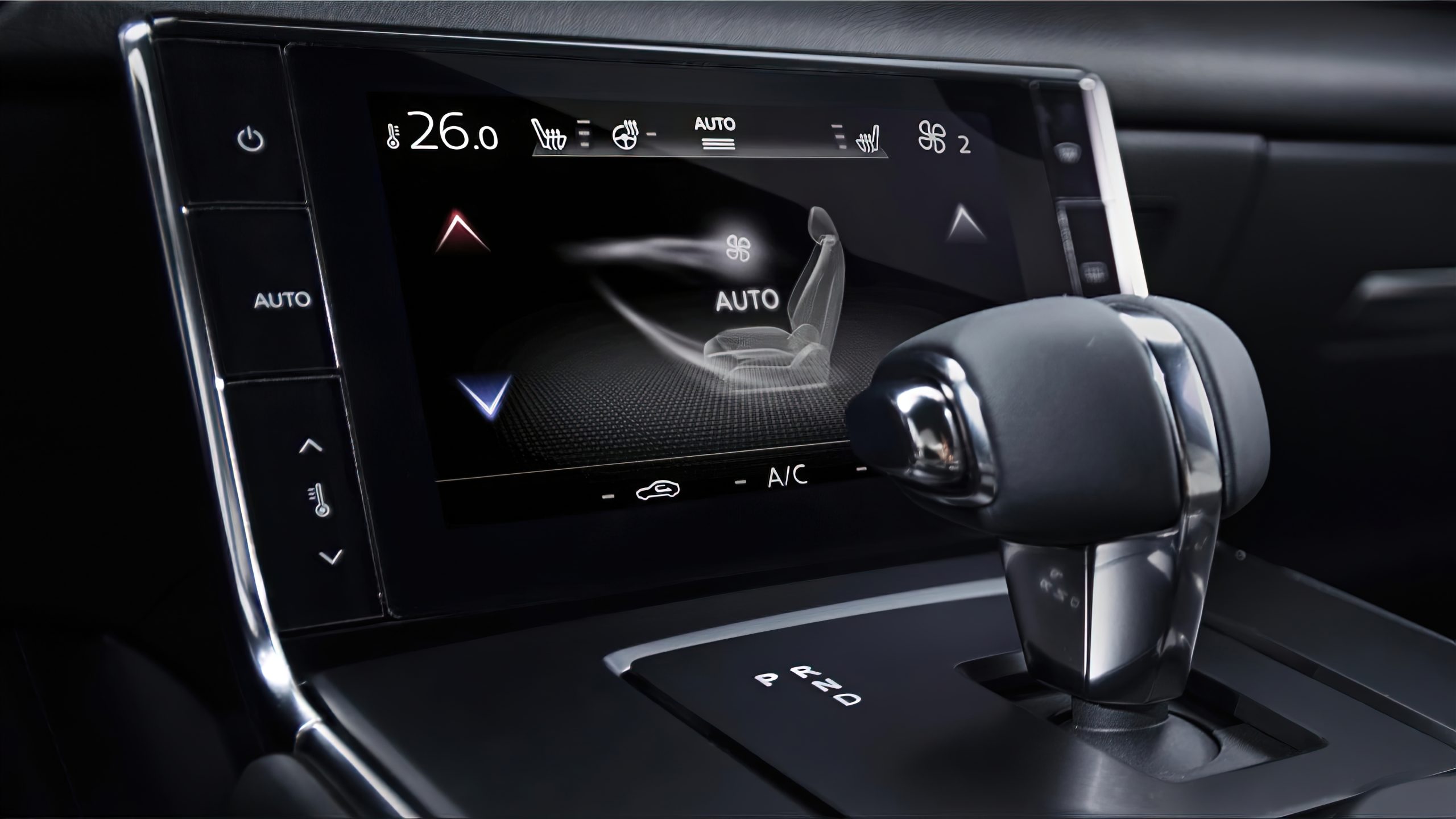
Limited range
When we talk about driving, we need to mention the reach. This is stated to be 200 kilometers according to the WLTP standard, which is even slightly smaller than both the Honda e and Mini Cooper SE. Fast charging is also slow, max 50 kW. It does not have to be a big problem, as this is hardly the car you would choose if you are going on a long trip. You will not be able to accommodate a large family, adult rear seat passengers, or any particular amount of luggage. And forget shopping in IKEA.
In other words, it’s a city car disguised as an SUV. A bit like the Hyundai Kona, except that the latter can actually drive over twice as far. But at a significantly higher price.
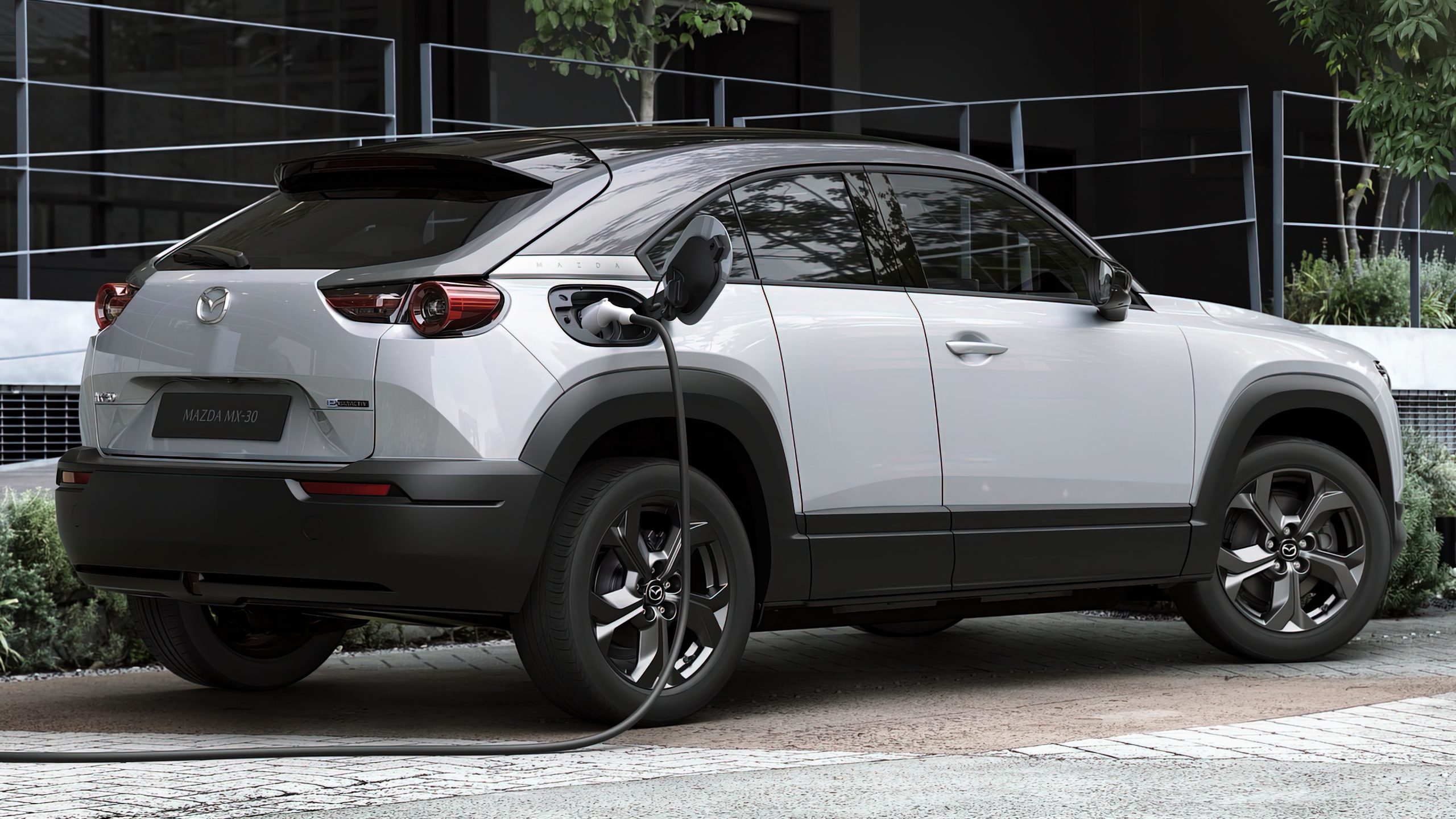
Conclusion
The Mazda MX-30 is an electric car with a lot of equipment for the money. Here are lots of features – some handsome and others redundant – and you get a very capable Bose system included for less than 30 Grand. This increases the driving pleasure, no matter your preference of music style.
What the car lacks is rear seat and luggage space, in addition to the fact that it is far from the most agile electric car we have driven. It also has a significant blind spot, due to the large frames on the rear and front doors.
It’s a bit like the Hyundai Kona in both size and equipment, except that the latter has more than twice the range. Which you then also have to pay handsomely for.
In other words, you have to consider the range against price. If you do not need a car for long journeys, but just need a ride to and from work and small errands here and there, then there is no doubt that the Mazda RX-30 provides a lot of car – and equipment – for the money. And not least good sound while on the road. Even though it is a bit slow. And what about that fake engine sound?

We think
Well equipped and intuitive to use for those who are not familiar with electric cars before. Very well-sounding sound system. Cramped rear seats, "suicide doors" notwithstanding. Limited range and slow "fast" charging. Simulated engine noise cannot be switched off. No front trunk.
29845 €
Specifications
- Equipment package: Cosmo (EU: Luxury)
- Range: 200 km (WLTP)
- Battery capacity: 35.5 kWt (gross)
- Charging capacity: 50 kW (6.6 kW at home)
- Power: 107 kW / 145 HP
- 0-100 km / h: 9.7 s
- Net weight: 1645 kg
- Number of speaker elements: 12
- Amplifier: Power not specified
- Speaker setup: 5.1
- Approved for trailer: No.
- Roof box: Up to 75 kg
- Other: MyMazda app
- Web: mazda.com
